- Wednesday, 17 December 2025
Baku: Alluring Destination For Travellers
When the proposal came from friends to join in a civil society-organised event on global peace at Baku-Azerbaijan capital city, I quickly accepted it, particularly because of the lure of the venue. I had heard about Azerbaijan and its capital, Baku, and read a little about it as one of the Soviet Socialist Republics, which became an independent state shortly before the dissolution of the Soviet Union. I agreed to the idea, for I was keen to know how Azerbaijan has steered its transition from the Soviet-style communist social, political, and economic set-up to the post-communist social and political order. Another curiosity that I have had was to explore into trans-Caucasus history, as it is alluded to the Caucasoid race to which people from west to the Indian subcontinent belong in particular. However, I knew that this would require a dedicated study and interrogation on the subject. Furthermore, in my query on the subject, Mirhuseyn, a student specialising in international relations at Baku State University, shares, “While Azerbaijan is geographically located in the Caucasus region, the people of Azerbaijan are not traditionally considered part of the Caucasoid race. Azerbaijan has long emphasised its multicultural identity, beginning with the First Republic in 1918. At that time, officials started using the term "Azerbaijani" to emphasise the unity of all ethnicities within the country. This continued after 1991, when the Constitution of independent Azerbaijan also referred to its people as Azerbaijanis. According to recent data, around 80–85 per cent of the population is ethnically Turkic, not Caucasian. Additionally, Armenians are descendants of Indo-Europeans, while Georgians are part of the Caucasian ethnic group, both distinct from Azerbaijanis, adds Mirhuseyn.
Anyway, I was aware that the Republic of Azerbaijan had proclaimed its independence from the tutelage of the Union of Soviet Socialist Republics (USSR) in August 1991, which came at huge sacrifices of the Azerbaijani people. However, it later voted to become a member of the Commonwealth of Independent States (CIS), together with some of the other former SSRs. The CIS charter clearly stated that all its member states were sovereign and independent nations, and it effectively dissolved and abolished the communist Soviet Union. In fact, CIS had been created as an intergovernmental mechanism to promote collaboration among the former Soviet republics. However, the CIS arrangement has been in trouble for long, as some of its member states seem to be reluctant to fully commit to it due to conflicts in Eurasian countries, among others.
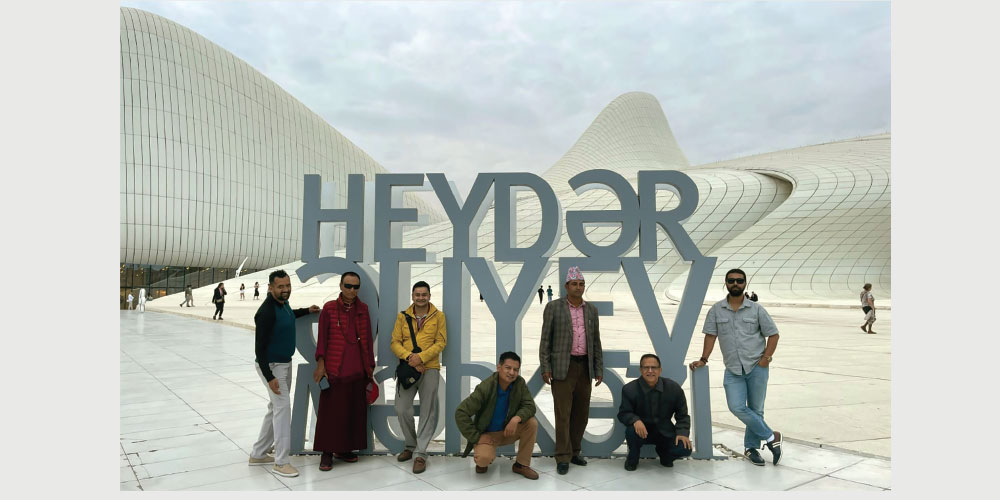
The Air Arabia aircraft took us to Baku international airport via Sharjhah of the United Arab Emirates (UAE) during the third week of September. As the plane landed, we—a group of Nepali participants—passed through the immigration. Instantly, my attention was caught by its ornate structures and architecture. The new terminal at Azerbaijan’s Heydar Aliyev International Airport features an attractive interior architecture with cocoon design.
I spent about six days in Baku, the capital and largest city of Azerbaijan. Though most of my time was dedicated to sessions in the Global Peace Conclave, I have had the opportunity to tour around some of the much-coveted tourist spots in the city. I had a time to see flame towers—a group of three skyscrapers. According to the information booklets, these three flame-shaped towers are intended, according to the city brochure, to symbolise the elements of fire. They are a reference to Azerbaijan's nickname "the Land of Fire," historically rooted in a region where natural gas flares emit from the ground. Needless to say, Zoroastrian worshippers considered flames to be a symbol of the divine. As I visited the flame tower with a group of Nepali friends, the panoramic sight of the Caspian Sea overlooked from there in the evening and a natural gas flare emitting from the ground fascinated us.
Moreover, we also visited Heydar Aliyev Centre, among others, a building complex noted for its distinctive architecture with curved style. The centre is named after Heydar Aliyev, president of the Azerbaijan Republic from October 1993 to October 2000. Heydar Aliyev remains an iconic figure in Azerbaijan due to his exceptional leadership both during the Soviet period and after the country gained independence. Aliyev's career began in the Soviet Union, where he became the First Secretary of the Communist Party of Azerbaijan SSR in 1969-1982. His leadership transformed the country’s economy and infrastructure. As a high-ranking official within the Soviet Union, he held influential positions, including membership in the Politburo and First Deputy Chairman of the USSR Council of Ministers. His rise to prominence made him the first non-Russian to hold such significant power, observes Mirhuseyn.
After the Soviet Union collapsed, Aliyev played a pivotal role in stabilising Azerbaijan. Returning to power in 1993, he served as President and successfully navigated the country through internal strife and the war with Armenia over Nagorno-Karabakh. His economic policies revitalised Azerbaijan’s oil industry, cementing the nation's economic independence.
It is interesting to note that Baku is 28 meters (92 feet) below sea level. It is the lowest-lying national capital in the world and so the largest city in the world below sea level. As oil has been the mainstay of the Azerbaijani economy, I was curious to know whether Baku was developed into a luring destination as it is today during the Soviet period. Baku, renowned for its architectural beauty and appeal to tourists, also boasts a history of impressive urban development. The city's first oil boom before 1920 led to the construction of many beautiful buildings influenced by European, Renaissance, and Russian architectural styles. The Soviet era, particularly before the mid-1950s, added more significant buildings. However, from the mid-1950s onwards, most constructions became more functional and less ornate.
Interestingly, during the Soviet period, the city was noted for being greener and well-planned as well. Furthermore, Baku embarked on a process of restructuring on a scale during the post-Soviet era. Thousands of panel buildings from the Soviet period were demolished to make way for a green belt. Parks and gardens were built on the land reclaimed by filling up the beaches of Baku Bay. The Baku city is growing dynamically and developing at pace on an east-west axis along the shores of the Caspian Sea. The historical centre of Baku reveals its tumultuous past, from its roots as a Silk Road port city through its oil boom to its Soviet period. The old city is a maze of alleys, mosques, historic buildings, and remnants of fortification, including the Palace of the Shirvanshahs and the Maiden Tower, now listed among UNESCO's World Heritage Sites. Much more than a historic site, the city hosts vibrant arts and cultural activities, as well as a bustling modern business sector, writes the Baku city introduction brochure.

The city is the scientific, cultural, and industrial centre of Azerbaijan. Many sizeable Azerbaijani institutions have their headquarters in Baku. According to Baku information sources, during the 2010s, Baku became a venue for major international events like Eurovision song contests, European Games, European Grand Prix, and so on. Baku is renowned for its harsh winds, reflected in its nickname, the "City of Winds" (Bayoo). Baku is a city founded upon oil, to which it owes its very existence, its maintenance, and its prosperity. At present, Baku is claimed to produce one-fifth of the oil that is used in the world, and the immense output in crude petroleum from this single city far surpasses that in any other place where oil is found. Baku had a reputation as a focal point for traders from across the world during the early modern period. Commerce was active, and the area prospered. Notably, traders from the Indian subcontinent established themselves in the region. These Indian traders built the Ateshgah temple of Baku during the 17th–18th centuries. The temple was used as a Hindu, Sikh, and Zoroastrian place of worship.
After a six-day long sojourn in Baku, I and the Nepali team members boarded the Air Arabia plane at Baku airport on our way back home. As the aircraft was poised to take off to fly into Sharjah, UAE, I was struck to see a swarm of the airborne passengers from India, almost of the same age, attire, and complexion, streaming into the aisles and settling into their seats. They were also flying back to India from Baku via Sharjah, winding up their almost week-long tour to Azerbaijan. The Air Arabia plane was fully booked by the Indian passengers, save for five Nepalis, including this writer. I caught up with one of the passengers seated beside me in the plane and asked him how come so many Indian passengers happened to travel in this Air Arabia aircraft at one go. The young Indian professional retorted that it was a group of one hundred seventy-five personnel from famous Bajaj Auto Ltd., a well-known motor manufacturer from India, that had sponsored the tour package for its own staff. Bajaj Auto Limited is an Indian multinational automotive manufacturing company based in Pune. It manufactures motorcycles, scooters, and autorickshaws.
Bajaj had put up its staff at Hotel Marriot in Baku and met all their expenses. Why this writer chose to bring up this matter in this piece was to question why our country, Nepal, so rich in nature and culture, could not vie to attract the clients of the corporate tour package from neighbouring countries, especially India. As a neighbouring country that has a free border with India and is relatively cheaper than other tourist destination countries, Nepal should prove to exalt itself as a coveted place for inbound tourists, vacationers, and corporate tour clients from at least South Asian countries, including India, Sri Lanka, Bangladesh, and neighbouring China, among others. Though Pokhara, Chitwan, Muktinath, Sworgadwari in Pyuthan, and so on draw a trickle of Indian tourists, Nepal has not been able to harvest the vast tourist potential, even though it shares social, cultural, and spiritual values with these nations. The primary reason behind this is that Nepal, despite its bounteous nature and culture, has not developed adequate physical infrastructures and diversified tourist products to lure a variety of tourists, travellers, and vacationers. Transport infrastructures, including highways and roads, are dysfunctional and decrepit. Travelling on roads is full of hassles, and travellers must undergo the nightmarish experiences while taking rides on the Nepali roads and highways. Air travel is also not risk-free. The road disasters and destructions caused by torrential rainfall last fortnight expose the dysfunctional state of disaster response mechanisms in the country. These are the reasons why tourists not only from India but from other parts of the world prefer to tour cities like Baku and many other tour-friendly destinations in the west and east.
(The author is presently associated with Policy Research Institute (PRI) as a senior research fellow. rijalmukti@gmail.com)




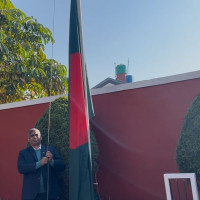
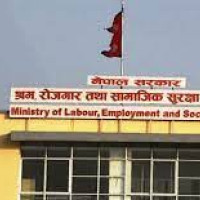

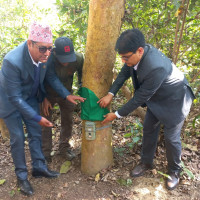
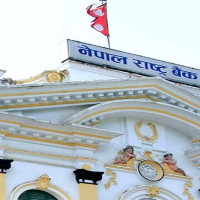


-original-thumb.jpg)



